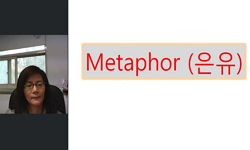This paper examines the semantic distribution of the auxiliary verb “hao” in the “S+好+VP” structure used in the eight Mandarin sub-dialects from a synchronic view. This study finds that in the eight sub-dialects of Mandarin, there is an imba...
http://chineseinput.net/에서 pinyin(병음)방식으로 중국어를 변환할 수 있습니다.
변환된 중국어를 복사하여 사용하시면 됩니다.
- 中文 을 입력하시려면 zhongwen을 입력하시고 space를누르시면됩니다.
- 北京 을 입력하시려면 beijing을 입력하시고 space를 누르시면 됩니다.
https://www.riss.kr/link?id=A107083419
- 저자
- 발행기관
- 학술지명
- 권호사항
-
발행연도
2020
-
작성언어
Chinese
- 주제어
-
등재정보
KCI등재
-
자료형태
학술저널
- 발행기관 URL
-
수록면
211-233(23쪽)
-
KCI 피인용횟수
0
- DOI식별코드
- 제공처
-
0
상세조회 -
0
다운로드
부가정보
다국어 초록 (Multilingual Abstract)
This paper examines the semantic distribution of the auxiliary verb “hao” in the “S+好+VP” structure used in the eight Mandarin sub-dialects from a synchronic view. This study finds that in the eight sub-dialects of Mandarin, there is an imbalance in the semantic distribution of “好” in the aforementioned structure. In some Mandarin sub-dialects areas, “好” can either be grammaticalized into a modal auxiliary verb or an aspect marker.
With the focus on the close connection between the three-tone “hao” and the four-tone “hao“, this paper discusses the grammaticalization of “hao” in the “S+好+VP” structure from a diachronic perspective. This study reveals that the four-tone “Hao” and its semantic item “HABITUATION” play a key role in the semantic evolution of the auxiliary verb “好” . Moreover, the two different pronunciations of “好” in modern Chinese are due to the mismatch of the form and the semantics that occurred in the Middle Ages. As illustrated by the grammaticalization path of “hao” that was constructed in this paper, we could conclude that the Language Universal can be observed through the chinese language. This paper makes a useful supplement to the research of Bybee et al (1994), Heine & Kuteva (2002), etc.
목차 (Table of Contents)
- 1. 引言
- 2. 官话区助动词““好”的语义分布
- 3. 助动词“好”的语法化
- 4. 结语
- 【參考文獻】
- 1. 引言
- 2. 官话区助动词““好”的语义分布
- 3. 助动词“好”的语法化
- 4. 结语
- 【參考文獻】
- 【Abstract】
참고문헌 (Reference)
1 박성하, "현대중국어 ‘要’의 양태기능과 문법화 연구" 성균관대학교 2015
2 Jiang Meng, "평가류 양상조동사의 문법화 연구-‘好’, ‘難’, ‘容易’를 중심으로" 한국외국어대학교 2018
3 박원기, "고한어 양태부사 ‘好’의 문법화와 그 발전과정" 중국어문연구회 (59) : 1-28, 2013
4 陈前瑞, "语法化与汉语时体研究" 学林出版社 2017
5 蔡维天, "談漢語模態詞的分布與詮釋之對應關系" 2010
6 亓海峰, "胶辽官话的声调减化现象" (2) : 2010
7 申惠仁, "现代汉语四种“好V”结构" (9) : 2009
8 黄郁纯, "汉语能愿动词之语义研究" 国立台湾师范大学 2000
9 范晓蕾, "基于汉语方言的惯常范畴研究" 19 (19): 2017
10 Jiang Meng, "助动词“好”的语法化过程" (6) : 2017
1 박성하, "현대중국어 ‘要’의 양태기능과 문법화 연구" 성균관대학교 2015
2 Jiang Meng, "평가류 양상조동사의 문법화 연구-‘好’, ‘難’, ‘容易’를 중심으로" 한국외국어대학교 2018
3 박원기, "고한어 양태부사 ‘好’의 문법화와 그 발전과정" 중국어문연구회 (59) : 1-28, 2013
4 陈前瑞, "语法化与汉语时体研究" 学林出版社 2017
5 蔡维天, "談漢語模態詞的分布與詮釋之對應關系" 2010
6 亓海峰, "胶辽官话的声调减化现象" (2) : 2010
7 申惠仁, "现代汉语四种“好V”结构" (9) : 2009
8 黄郁纯, "汉语能愿动词之语义研究" 国立台湾师范大学 2000
9 范晓蕾, "基于汉语方言的惯常范畴研究" 19 (19): 2017
10 Jiang Meng, "助动词“好”的语法化过程" (6) : 2017
11 张定, "助动词“好”的语法化及相关词汇化现象" (5) : 2009
12 伯纳德科姆里, "体范畴" 北京大学出版社 2016
13 李晋霞, "“好”的语法化与主观性" (1) : 2005
14 최재영, "“S+好+V”结构中“好”的词性再议——以“这本书好读”为例" 중국학연구회 (75) : 109-129, 2016
15 임소정, "‘好’의 문법화 및 용법 간의 상관성 연구 - 조동사, 접속사, 관련부사 용법을 중심으로" 중국학연구회 (85) : 87-112, 2018
16 Heine、Kuteva, "World Lexicon of Grammaticlal ization" 世界图书出版公司 2012
17 Suzanne Romaine, "The Grammaticalization of the Proximative in Tok Pisin" Linguistics Society of America 1999
18 Bybee, Joan L., "The Evolution of Grammar: Tense, Aspect, and Modality in the Languages of the World" The University of Chicago Press 1994
19 Palmer, F. R, "Mood & Modality" Cambridge University Press 2001
20 Bybee, Joan L., "Modality in Grammar and Discourse" John Benjamins 1995
21 J. van der Auwera, "Linguistic Typology" 1998
동일학술지(권/호) 다른 논문
-
- 한국중어중문학회
- 장정임(Chang, Jung-im)
- 2020
- KCI등재
-
- 한국중어중문학회
- 조은정(Cho, Eun-jeong)
- 2020
- KCI등재
-
채련 작품의 향유방식으로 인한 장르 소통 고찰 - 南朝와 唐五代 采蓮작품을 중심으로
- 한국중어중문학회
- 김수희(Kim, Soo-hee)
- 2020
- KCI등재
-
중국의 도시-도시 간 유동인구와 ‘베이퍄오(北漂)’의 새로운 선택 - 웹드라마 『베이징여자도감(北京女子圖鑑)』의 경우
- 한국중어중문학회
- 이화진(Lee, Hwa-jin)
- 2020
- KCI등재
분석정보
인용정보 인용지수 설명보기
학술지 이력
| 연월일 | 이력구분 | 이력상세 | 등재구분 |
|---|---|---|---|
| 2027 | 평가예정 | 재인증평가 신청대상 (재인증) | |
| 2021-01-01 | 평가 | 등재학술지 유지 (재인증) |  |
| 2018-01-01 | 평가 | 등재학술지 유지 (등재유지) |  |
| 2015-01-01 | 평가 | 등재학술지 유지 (등재유지) |  |
| 2013-05-21 | 학회명변경 | 한글명 : 변화없음 -> 한국중어중문학회영문명 : Korea Association of Chinese Language And Literature -> 미등록 |  |
| 2013-05-21 | 학회명변경 | 한글명 : 한국중어중문학회 -> 변화없음영문명 : The Chinese Language And Literature Society Of Korea -> Korea Association of Chinese Language And Literature |  |
| 2013-05-21 | 학술지명변경 | 외국어명 : The Journal of Chinese Language and Literature -> Korea Journal of Chinese Language and Literature |  |
| 2011-01-01 | 평가 | 등재학술지 유지 (등재유지) |  |
| 2009-01-01 | 평가 | 등재학술지 유지 (등재유지) |  |
| 2007-01-01 | 평가 | 등재학술지 유지 (등재유지) |  |
| 2005-01-01 | 평가 | 등재학술지 유지 (등재유지) |  |
| 2002-01-01 | 평가 | 등재학술지 선정 (등재후보2차) |  |
| 1999-01-01 | 평가 | 등재후보학술지 선정 (신규평가) |  |
학술지 인용정보
| 기준연도 | WOS-KCI 통합IF(2년) | KCIF(2년) | KCIF(3년) |
|---|---|---|---|
| 2016 | 0.32 | 0.32 | 0.26 |
| KCIF(4년) | KCIF(5년) | 중심성지수(3년) | 즉시성지수 |
| 0.26 | 0.22 | 0.575 | 0.12 |





 DBpia
DBpia






